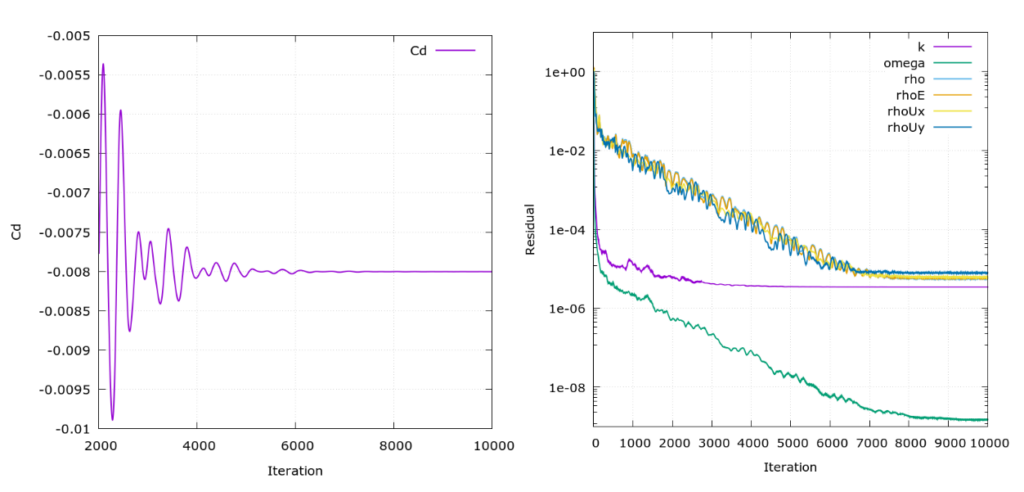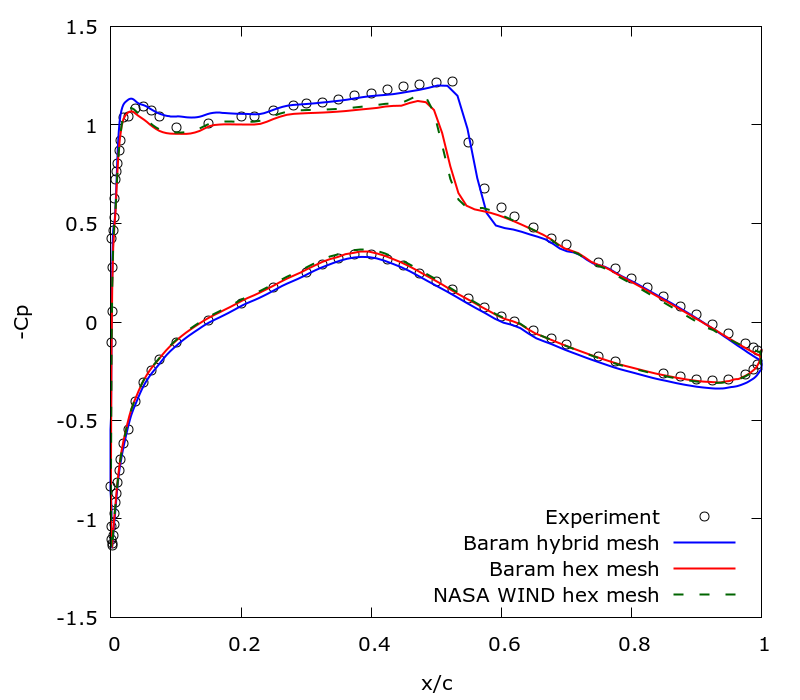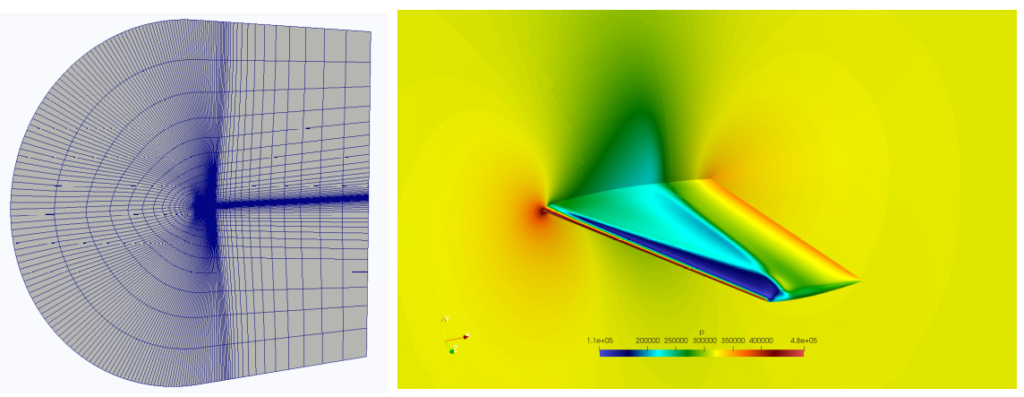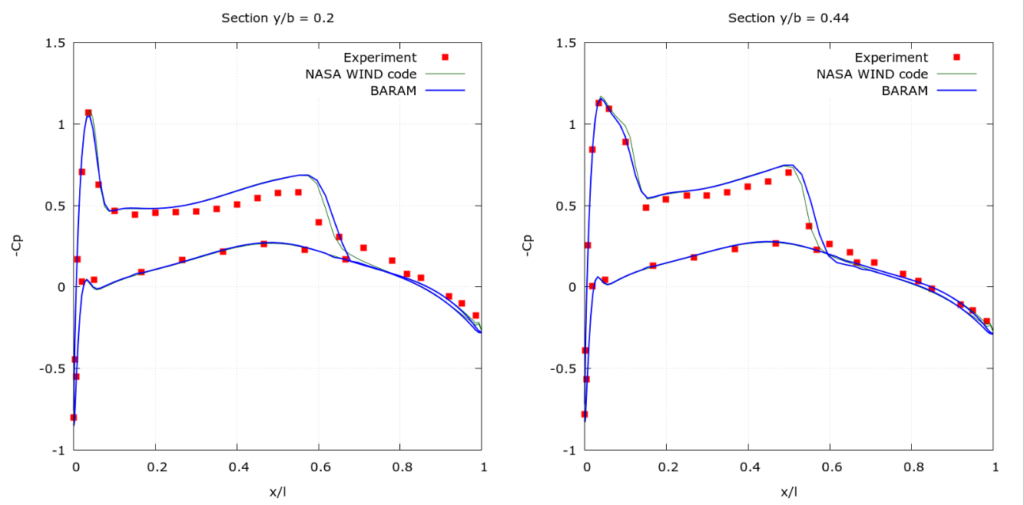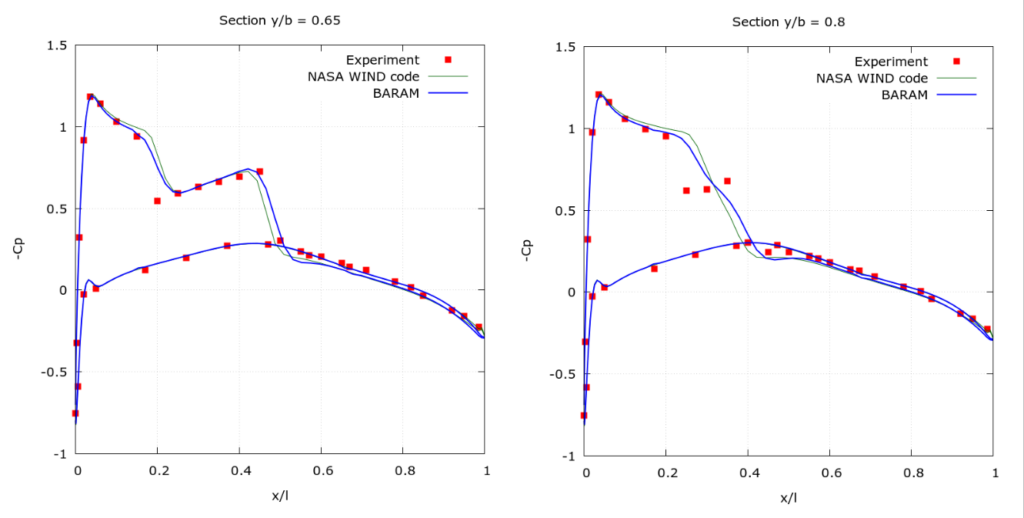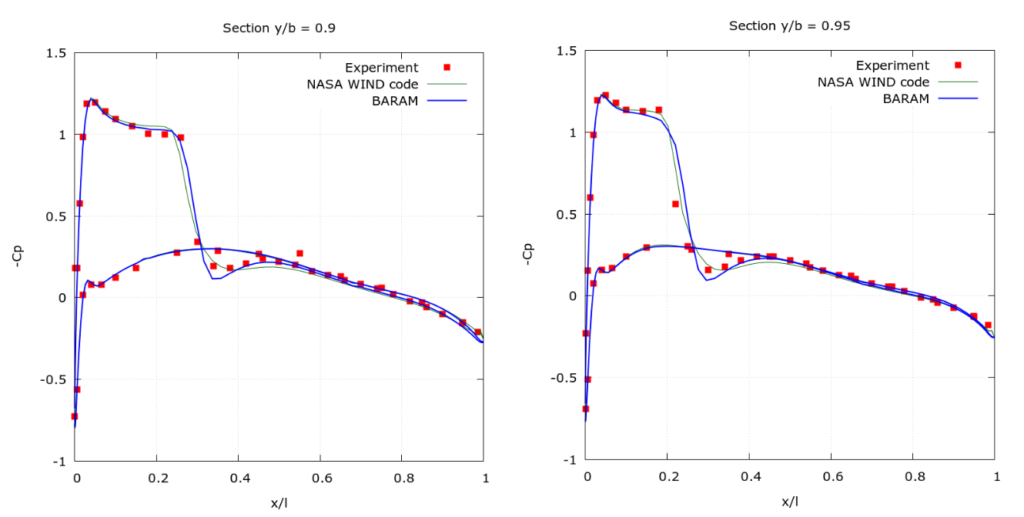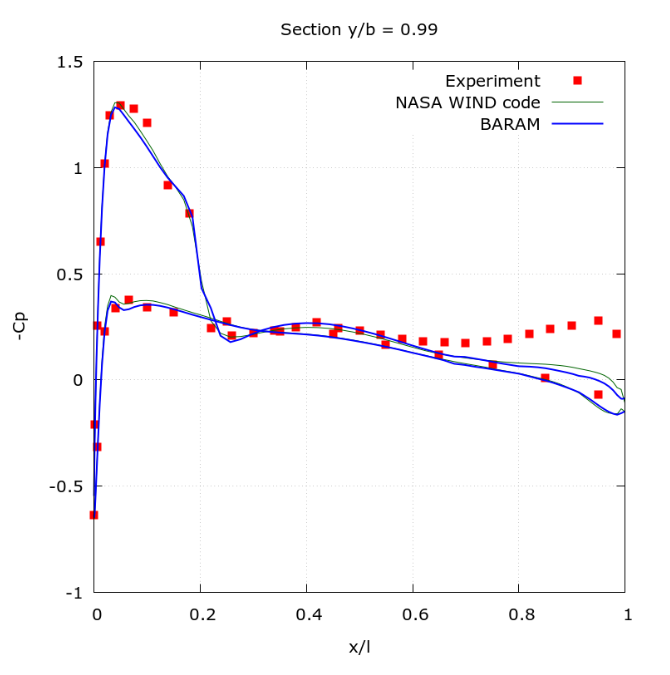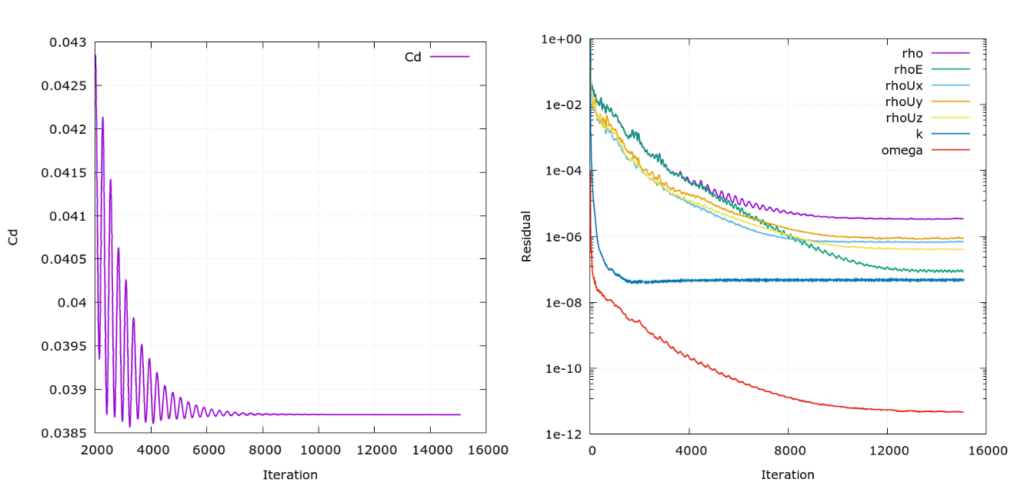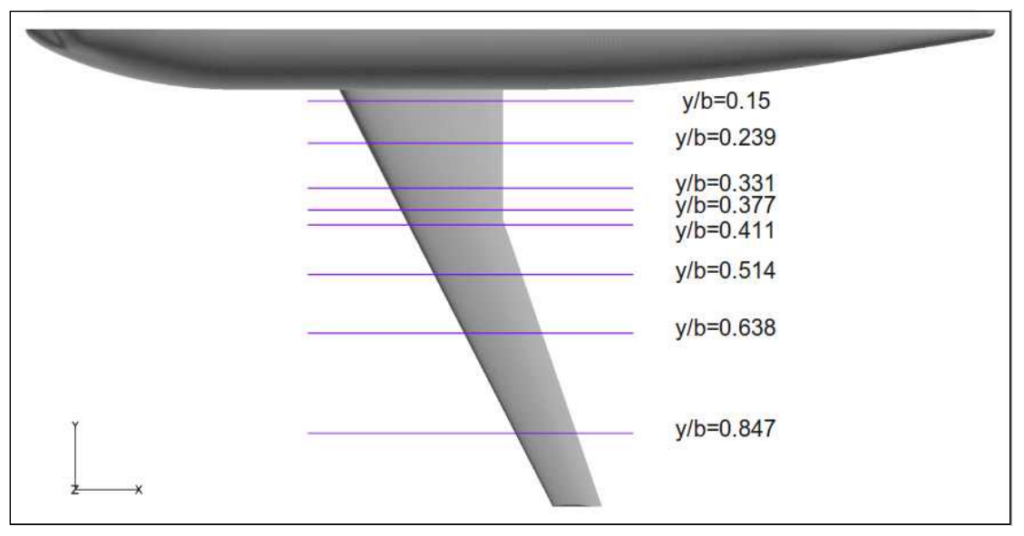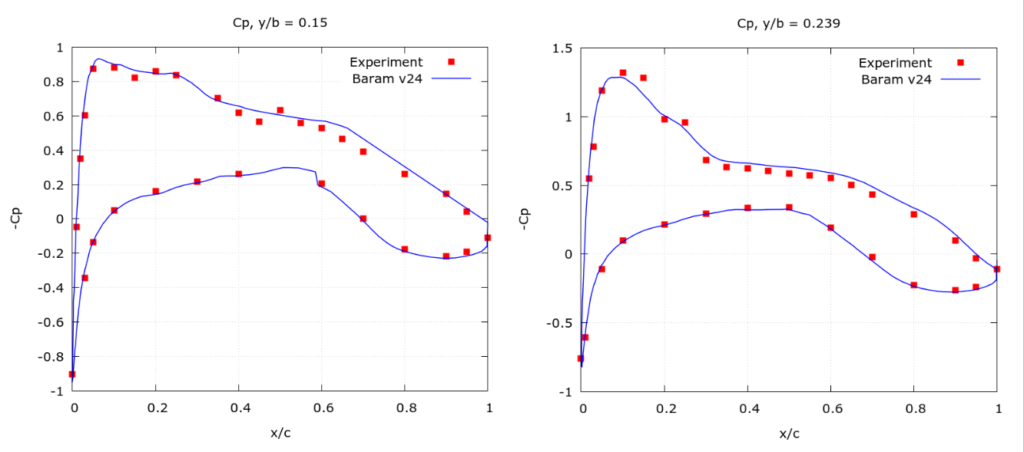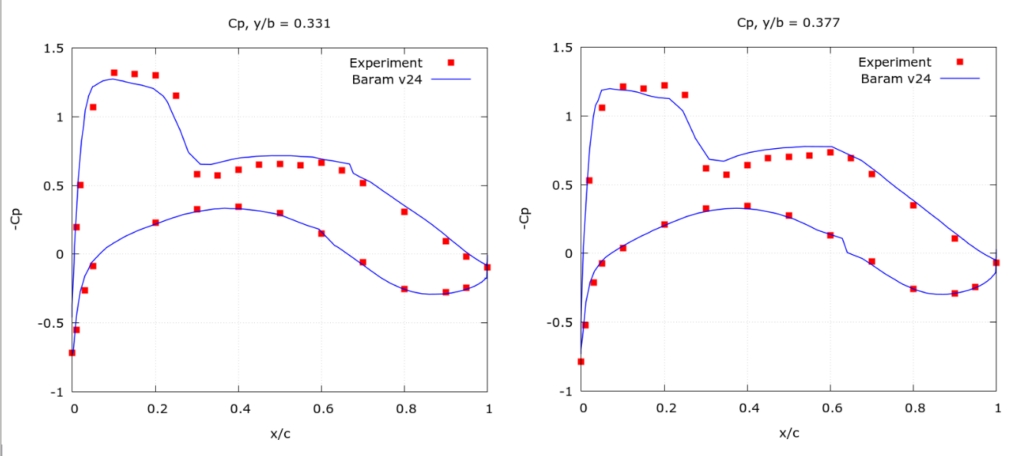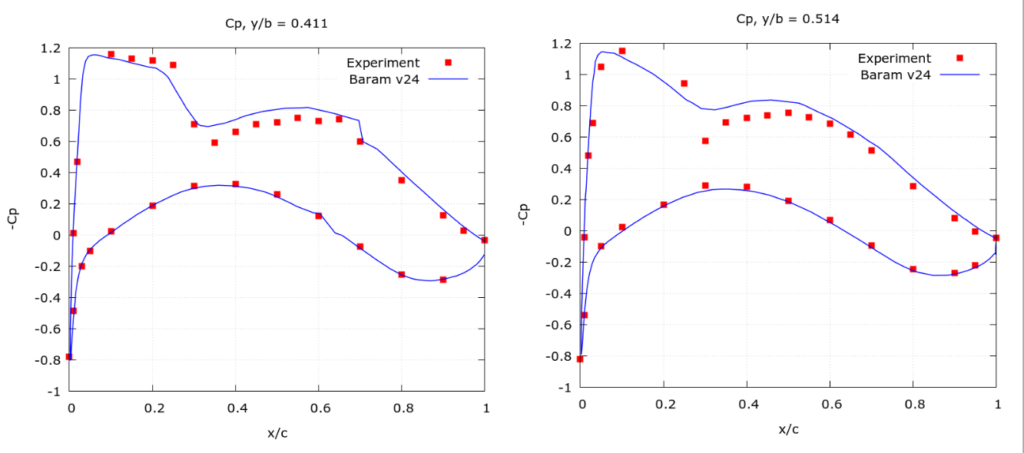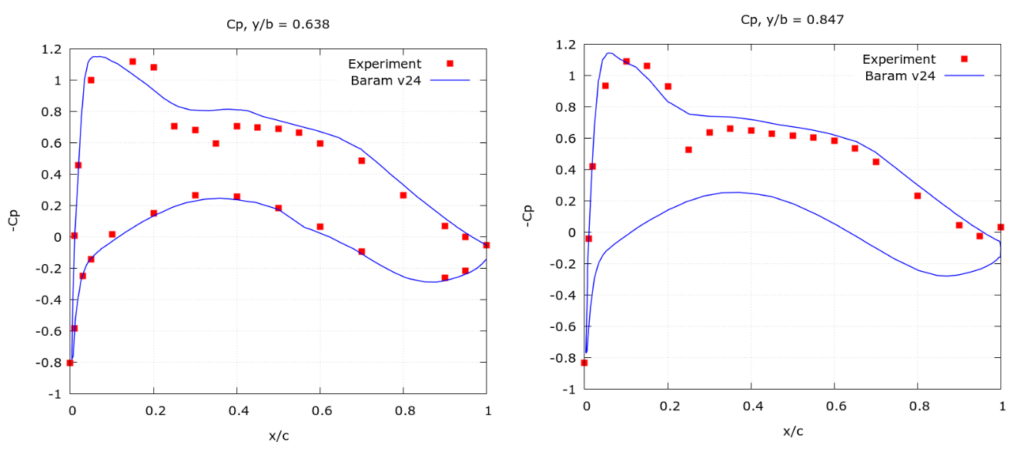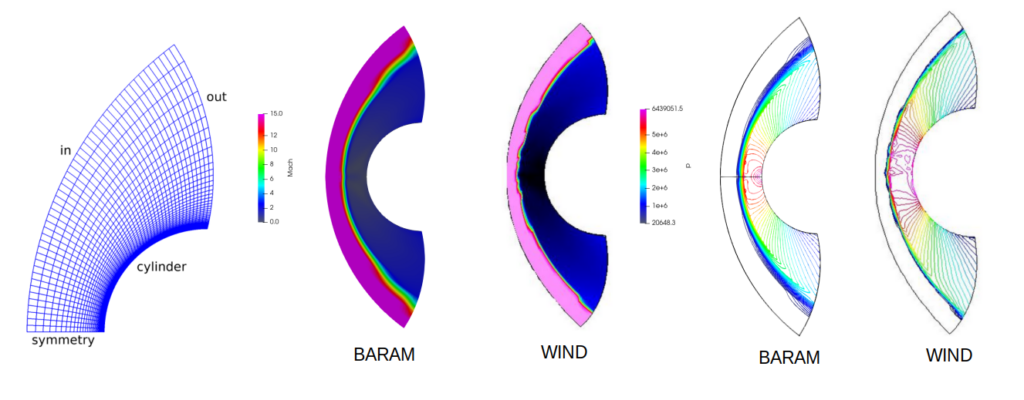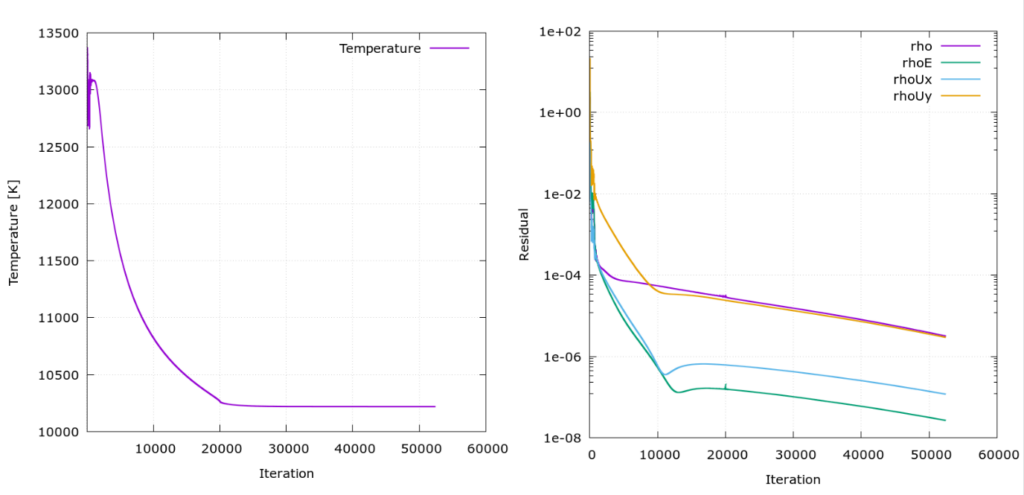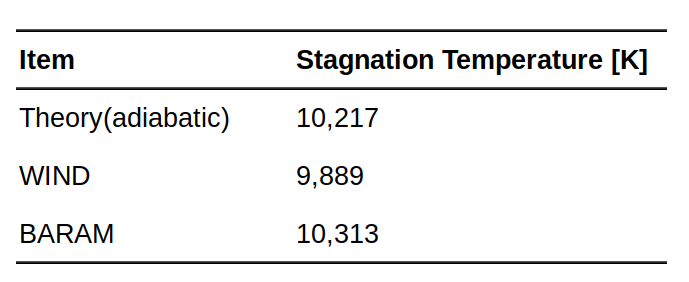Baram Validation – Density Based Solver
We present computational results that verify the accuracy of the BARAM density-based solver.
RAE2822 Transonic Airfoil
Validation of flow analysis results for RAE2822 transonic airfoil using density-based solver.
More details can be found on the NASA webpage
https://www.grc.nasa.gov/WWW/wind/valid/raetaf/raetaf01/raetaf01.html , which provides grid files, experimental results, and calculations from the NASA WIND code.
The conditions used were Mach number 0.729 and angle of attack 2.31 degrees.
The mesh used were two types: a structured grid provided by the NASA web page and an unstructured grid consisting of a tetrahedral/prismatic grid.
The turbulence model used is SST k-omega model.
The boundary conditions are as follows:
- Far-field : Far-Field Riemann
- Flow direction : AOA 2.31
- Mach Number : 0.729
- Static Pressure : 108988
- Static Temperature : 255.56
- airfoil : Wall, No Slip, Adiabatic
Flux scheme is Roe-FDS, limiter is Venkatakrishnan limiter, and CFL number is 1000.
Please see the tutorial for more details .
The convergence history of Cd and Residual is shown in the figure below. Convergence was achieved after approximately 7,000 iterations.
The pressure coefficients in the airfoil were calculated using structured and unstructured grids, compared with experimental data and NASA WIND code results. The structured grid results are nearly identical to those from NASA WIND. The unstructured grid results agree quite well with the experimental values.
ONERA M6 Wing
This is a validation of the flow analysis results for the ONERA M6 transonic wing using a density-based solver. The ONERA M6 wing is widely used to evaluate compressible flow analysis results.
More details can be found on the NASA web page https://www.grc.nasa.gov/WWW/wind/valid/m6wing/m6wing.html , which provides grid files, experimental results, and calculations from the NASA WIND code.
The conditions used is Mach number 0.8395 and angle of attack 3.06 degrees.
The grid was converted from a structured grid file downloaded from the website.
The turbulence model is SST k-omega model.
The boundary conditions are as follows:
- far-field : Far-Field Riemann
- Flow direction : AOA 3.06
- Mach Number : 0.8395
- Static Pressure : 315980
- Static Temperature : 255.56
- k : 2.714
- omega : 131360
- wing : Wall, No Slip, Adiabatic
Flux scheme is Roe-FDS, and limiters is Venkatakrishnan.
Please see the tutorial for more details .
Pressure coefficients were compared with experimental results and NASA WIND code results at seven cross sections where y/b in the span direction were 0.20, 0.44, 0.65, 0.80, 0.90, 0.95, and 0.99.
DLR F6 Transonic Wing Body
Validation of the flow analysis results of the DLR F6 transonic aircraft using a density-based solver.
We used the geometry and experimental conditions published at the AIAA 2nd Drag Prediction Workshop.
More details can be found on the webpage https://aiaa-dpw.larc.nasa.gov/Workshop2/workshop2.html .
The conditions used is Mach number 0.75 and angle of attack 0.49 degrees.
The mesh is tetrahedral/prism hybrid mesh.
The turbulence model is SST k-omega model.
The boundary conditions are as follows:
- Far-field : Far-Field Riemann
- Flow direction: AOA 0.49
- Mach Number: 0.75
- Static Pressure: 116577
- Static Temperature: 300
- wing, body: Wall, No Slip, Adiabatic
Flux scheme is Roe-FDS, limiter is Venkatakrishnan, and CFL number is 1000.
The convergence history of Cd and Residual is shown in the figure below. Convergence was achieved after approximately 9,000 iterations.
The pressure coefficients were compared with experimental results at eight cross sections with y/b of 0.15, 0.239, 0.331, 0.377, 0.411, 0.514, 0.638, and 0.847 in the span direction of the wing.
Hypersonic Cylinder
Validation of hypersonic flow analysis results using a density-based solver.
The geometry and conditions published on NASA’s homepage were used. There is no experimental data to compare the results with, and the results were compared with those from the NASA WIND code.
More details can be found at https://www.grc.nasa.gov/WWW/wind/valid/hypcyl/hypcyl.html .
Mach number is 15, pressure is 20684.3 Pa, temperature is 222.222 K, and uses calorically perfect gas conditions
The grid is structured grid published on the web page.
The turbulence model is SST k-omega model.
Flux scheme is Roe-FDS, limiter is Venkatakrishnan, and CFL number is 10.
The convergence process of the stagnation temperature and residual is shown in the figure below. Convergence was achieved after approximately 20,000 iterations.
Stagnation temperature is:


